#wheelgunwednesday
My first experience with the K-38 was early in police service. The state’s peace officers’ association had a fall conference and a spring conference. Shooting competition was involved in both. Clay bird sports were featured for fowling pieces (rifles weren’t in regular use at the time in this state) and handgun competition came in two variants: bullseye and PPC.
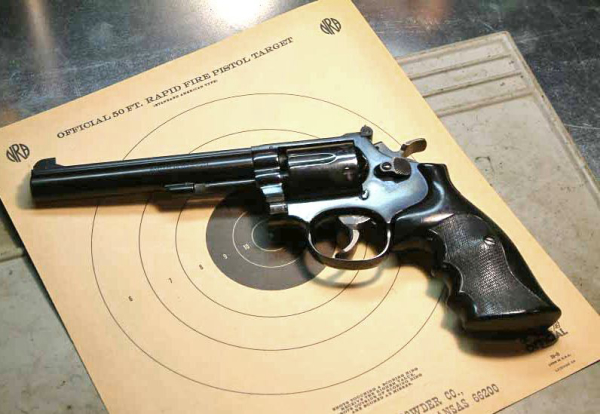
The K-38 was a king in both classes of competition in the 1970s. While Coffeyville KS Police had several S&W M52 autos – steel frame single action guns nearly in the form of the S&W M39, but configured to shoot flush-seated 38 Special wadcutters only (and marked “Mid-Range”), most of the troops from this state used revolvers. In my sole appearance as a team member at KPOA, I shot a Colt Python 6” revolver with my homebrew reloads for bullseye. For PPC, I had a second-hand S&W M14 (the name given the K-38 post-1957). It was hard chromed and had a full-length rib on top with a durable, finely adjustable rear sight. The stocks were not only screwed onto the gun, but were fitted with what appeared to be bedding compound. It was a real “rooney gun,” just good for competition. It had a sweet double action that I found would fail to ignite primers reliably in competition – though it had done so in practice.
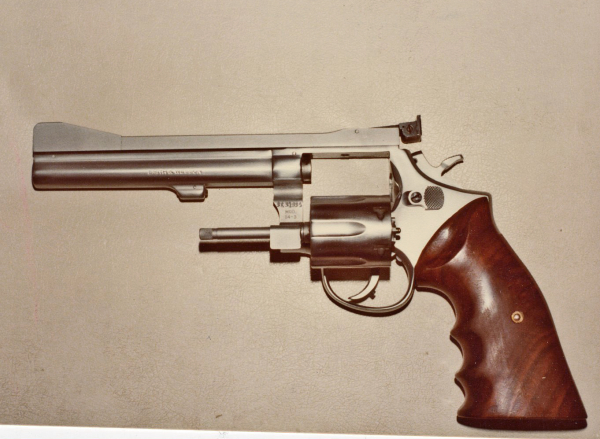
This started my anti-custom gun feelings that came and went over the years – I sent that one down the road. For a short time at the sheriff’s department, I had custody of one of their stock K-38 revolvers. A 6” revolver, it had a fair action with target trigger, target hammer and stocks. I shot it a fair bit and found it shot better than I could hold it.
It was ordered back so they could trade it on something no one ever used.
The K-38 is a 38 Special revolver in target form. The “K” refers to S&W’s medium size frame. The “Target Masterpiece” part of the moniker came from the gun’s success in competition during its run from 1947 until the 1980s. PPC was king before there was IPSC/USPSA and after bullseye (think National Match competition) had waned in influence. (Thankfully, bullseye is seeing a bit of a resurgence; tedious to watch and hard to shoot, it’s a real skill builder.)
Part of a family, the lineage began in 1946 with a 22-target revolver. That was the K-22. It was followed by a 32-caliber revolver, the K-32 and the 38 version, the K-38. The first gun was for the rimfire event in bullseye. The 32 and 38 were for centerfire matches. The guns were quite similar in form, all originally with 6-inch ribbed barrels, adjustable rear sights, patridge front sights and unshrouded ejector rods. The standard stocks were of the Magna form that went to the top of the backstrap. They were double action revolvers, though S&W made some Model 14 K-38s that were single action only; I’ve seen several but never fired one. For bullseye, single action was all you needed.
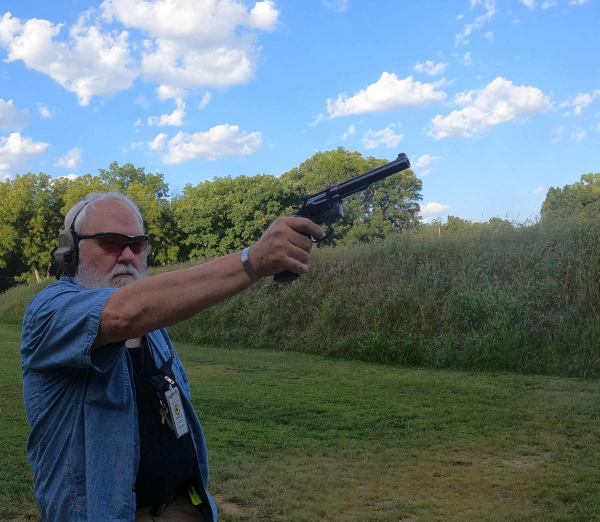
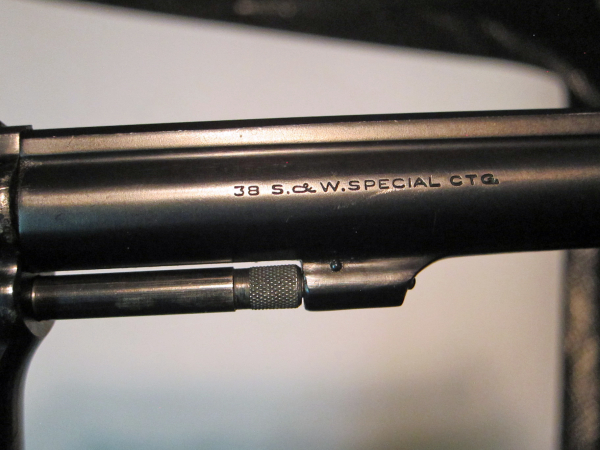
Built on a frame of the same general dimensions and weight of the M&P/Model 10, it was a good standard target version of the line and saw service as an authorized duty gun for the Los Angeles Police Department from some time in the 1960s through some part of the 1970s.
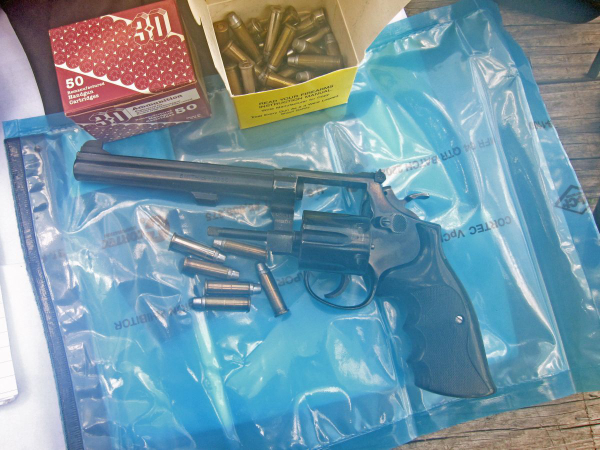
The current sample, shown here atop an Arms Preservation Gun Storage Bag, has the target trigger and target hammer that was an option. The stocks are the Bill Rogers revolver stocks for the K-frame. Made from nylon, they fit my small hands quite well.
I began my career with a small (ca. 30 sworn) police department that had the “big boy” rule as far as authorized handguns. The city didn’t buy guns for the troops, so you could carry what you wanted as long as you could qualify with it. With some, it sometimes went to extremes. An example was a career patrolman named Charlie.
Charlie was a barrel-chested patrolman who always seemed to make it onto the pistol team. A day-shift guy, Charlie wore a 6 ½” S&W .44 Magnum on his right side in a low-riding swivel holster – a fairly common holster in those days. Atop the rig, at the belt slide, was six cartridge loops. I could tell from a glance that the loops held the Remington .44 Magnum 240 grain SJHP loads. Remington made no other jacketed HP loads for the cartridge at the time.
I felt certain that he didn’t compete with such a rig at the twice-annual state peace officer matches as the courses of fire were bulls-eye and PPC. Both were restricted by local custom to the 25-yard distance, but they were otherwise indistinguishable from matches held around the country.
I asked him about that and he said that he used the K-38 with wadcutters. The department had a Star progressive reloader. You kept your own brass and bought bullets. The department supplied Hercules Bullseye and 1,000 small pistol primers per year. He taught me how to use the contraption and I learned something along the way, allowing me to join the pistol team for one match.
Sometime after my tenure was over, I was talking to someone about Charlie and his .44 Magnum. It seems a few of the young studs were giving him grief about shooting his department qualifications with the K-38 he used in matches. He promptly broke out a box of Remington “rhino roller” 44 Magnums and went to work with his S&W M29, cleaning the course of fire.
The young guys wisely shut up.
I shot the revolver pictured here during a muggy range trip. Using remanufactured 158gr. lead SWC ammo, I found the gun shot to the bottom of the B-8 repair center at 25 yards. Not mucking about with adjusting the sights – I’d likely never get to shoot this one again – I shot another six, one handed, with a higher hold. I still win no prizes, but all six hits were in the shaded area of the target.
This is a very classy handgun and one that prompts pleasant memories.
— Rich Grassi